Energy

The Energy Research division conducts approximately two-thirds of the Bureau research effort, and hosts approximately 70 full-time and 15 part-time researchers. It employs or provides academic advising to approximately 50 graduate students. The Energy division focuses on research involving energy resources, primarily oil and natural gas. Seven industrial research consortia pursue basic research on issues of significant importance to their corporate sponsors. Additional support is provided through numerous sponsored research projects funded by the State of Texas, the U.S. Department of Energy, individual energy companies, and foundations. Energy Research receives support (funding and/or datasets) from some 70 energy companies, and corporate university grant programs provide access to all of the industry-standard interpretation software packages. Main areas of focus include salt tectonics, carbonate, shale, and clastic reservoir characterization, mudrock systems, fracture characterization and prediction, multicomponent seismic applications, advanced seismic processing and imaging, oil and gas risk reduction in Texas, geothermal energy in Texas, and energy economics. Energy Research is heavily engaged in research that supports the remarkably successful development of unconventional oil and gas reservoirs (shales, tight carbonates and sandstones). Its researchers are noted for bringing insight from direct rock observation (model development based on outcrops and cores) to the rapidly-evolving field of 3-D quantitative analysis of sedimentary rock properties. With 70% of in-place reserves typically remaining in the ground at the time of oil field abandonment, this research has enduring economic and societal importance.

Geothermal
Geothermal energy; clean, baseload electricity generated off the heat of the Earth, has been a small part of the US and world energy picture for a hundred years – that is changing now! The Bureau, with deep expertise in N-dimensional sub-surface characterization, is working to advance the science behind geothermal resource exploration and assessment, as well as working with industry and the engineering sciences to tap this energy source. Click here for more information.

Hydrogen
Hydrogen (H₂) is a clean, transportable and storable fuel. It can be used in transportation, electricity production and the heating of homes. Hydrogen is generated using electrolysis, and from natural gas, which when combined with carbon capture and storage will reduce greenhouse gas emissions. The Bureau’s research focus is directed in three district areas; storage, in-situ generation and the economics associated with the hydrogen value chain. Click here for more information.
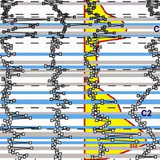
Unconventional Resource Recovery
The Bureau has been engaged in unconventional resource research for several decades, and its strengths in the field stem from a commitment to base research on rock fundamentals, rather than starting with derivative information, and to build integrated research teams to take on these challenging systems. Outcrop and core studies are central to these efforts. Subsurface characterization using the Bureau’s 1.5 million-log Geophysical Log Facility, seismic data, and stratigraphic and 3D models, all play a role. With funding from industry, and the federal and state governments, the Bureau emphasizes an integrated approach across geoscience and engineering disciplines to maximize the utilization of expertise. Key laboratory capabilities include SEM, Atomic Force Microscopy (AFM), X-Ray Fluorescence (XRF), a full geomechanics lab, and a multi-instrument organic geochemistry lab. The Bureau of Economic Geology maintains what may be the largest archive of well core in the world—over 2 million boxes—at three Texas facilities. Core is accessible from almost every U.S. state and many countries.
Tight Oil Resource Assessment (TORA)
Mudrock Systems Research Laboratory (MSRL)
State of Texas Advanced Resource Recovery program (STARR)
Fracture Research and Application Consortium (FRAC)
Reservoir Characterization Research Lab (RCRL)
Center for Energy Economics (CEE)
Texas Consortium for Computational Seismology (TCCS)
Center for Injection and Seismicity Research (CISR)
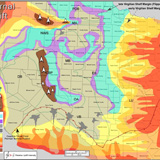
Permian Basin Studies
The Permian Basin is one of the most prolific oil and gas provinces in the world. The Bureau of Economic Geology has studied its multiple hydrocarbon-producing formations for many decades, and hosts a renowned group of researchers with deep expertise in the energy, environmental and economic implications of oil and natural gas production from this vast region.
Tight Oil Resource Assessment (TORA)
State of Texas Advanced Resource Recovery program (STARR)
Mudrock Systems Research Laboratory (MSRL)
Reservoir Characterization Research Laboratory (RCRL)
Fracture Research and Application Consortium (FRAC)
Center for Injection and Seismicity Research (CISR)
Previous Permian Basin studies:
Permian Basin Play Analysis
Permian Basin Synthesis Project
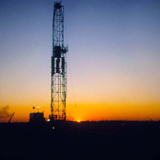
Texas Oil and Gas
Research which benefits the successful exploitation of the State of Texas’ energy resources. Studies include the unconventional reservoirs of the Barnett, Eagle Ford and Haynesville plays and the Permian Basin, conventional reservoirs throughout the state, and geothermal energy analysis and mapping, among other areas of study.
State of Texas Advanced Resource Recovery (STARR)
Tight Oil Resource Assessment (TORA)
Center for Injection and Seismicity Research (CISR)
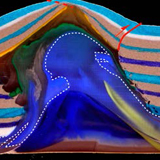
Structural Geology
Structural geology is the theme for two well-known research teams at the Bureau. The Applied Geodynamics Lab (AGL) investigates all aspects of salt tectonics, and the Fracture Research and Applications Consortium (FRAC) is dedicated to solving fundamental and practical problems associated with brittle deformation - primarily natural fractures and faults.
Applied Geodynamics Lab (AGL)
Fracture Research and Applications Consortium (FRAC)
Center for Injection and Seismicity Research (CISR)
Research Tools
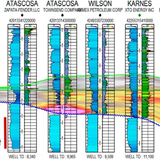
Stratigraphy and Sedimentation
Depositional environments and stratigraphic stacking patterns are major controls on fluid storage and flow. For these reasons, sedimentation and stratigraphy are significant considerations in many Bureau research programs including these:
State of Texas Advanced Resource Recovery (STARR)
Reservoir Characterization Research Lab (RCRL)
Mudrock Systems Research Lab (MSRL)
Quantitative Clastics Lab (QCL)
Tight Oil Resource Assessment (TORA)
Center for Injection and Seismicity Research (CISR)
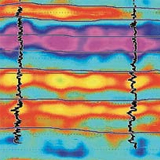
Reservoir Characterization
Bureau reservoir characterization methodology consists of determining reservoir architecture, establishing fluid-flow trends, constructing reservoir models, and identifying reserve growth potential. Research spans multiple reservoir types, including carbonates and siliclastics; tight, waterdrive, and retrograde gas condensate; and waterdrive oil, secondary oil recovery, heavy oil, and light oil. The Bureau’s Advanced Energy Consortium has reservoir characterization through the use of nano-technology as one of its key research thrusts.
Reservoir Characterization Research Laboratory (RCRL)
Advanced Energy Consortium (AEC)
Mudrock Systems Research Laboratory (MSRL)
Fracture Research and Application Consortium (FRAC)
Texas Consortium for Computational Seismology (TCCS)
Tight Oil Resource Assessment (TORA)
Center for Injection and Seismicity Research (CISR)
Northern Gulf of Mexico Reservoir-Quality Database
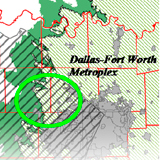
Energy and Environment
New hydrologic and geomorphic studies that provide a framework for preserving the environment and remediating past damages related to energy development. The research provides technical expertise to the private sector to produce energy while protecting the environment through economically sound approaches.
Water impacts from unconventional energy (Nicot, Scanlon)
Water, Landscape, and Species Studies (Young)
Water use in electricity generation (Scanlon)
TexNet-CISR (Hennings, Rathje, Savvaidis, Young)
Access to Water and Energy
Tight Oil Resource Assessment (TORA)
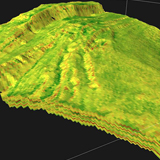
Reservoir Quality and Petrography
The Bureau has long-standing strengths in oil and gas reservoir studies. Carbonate reservoirs are the focus of the Reservoir Characterization Research Laboratory (RCRL). Clastic reservoirs – primarily sandstones – are the subject of in-depth research in the Quantitative Clastics Laboratory (QCL). The Mudrock Systems Research Laboratory (MSRL) works on fundamental problems in shale reservoirs, including reservoir quality prediction.
Reservoir Characterization Research Lab (RCRL)
Quantitative Clastics Lab (QCL)
Mudrock System Research Lab (MSRL)
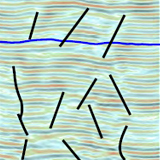
Geophysics
Geophysics research at the Bureau concentrates on developing multicomponent seismic technology that can be used to better characterize geologic systems. Research effort focuses on design of vector seismic sources, optimization of data-acquisition and data-processing procedures, and unified interpretation of P- and S-wave images. Research also addresses the most important and challenging research problems in computational geophysics as experienced by the energy industry while educating the next generation of research geophysicists and computational scientists.
Texas Consortium for Computational Seismology (TCCS)
TexNet Research and the Center for Injection and Seismicity Research (TexNet-CISR)

Nanotechnology in Hydrocarbon Recovery
The Bureau leads a large, multi-institutional consortium that conducts pre-competitive research in micro- and nanotechnology materials and sensors that have the potential to create a positive and disruptive change in the recovery of petroleum and natural gas from new and existing reservoirs.

Energy Economics
The study of energy markets (oil; natural gas; electricity; power storage) leading to economic projections which inform decision-makers in industry and government.
Center for Energy Economics (CEE)
Tight Oil Resource Assessment (TORA)
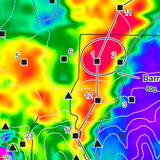
The Energy-Water Nexus
The study of brackish water resources and water treatment, water use in energy exploration and production (mostly unconventional energy), and water use in the electricity generation sector.
The Water-Energy Nexxus research compilation
Tight Oil Resource Assessment (TORA)
Center for Injection and Seismicity Research (CISR)